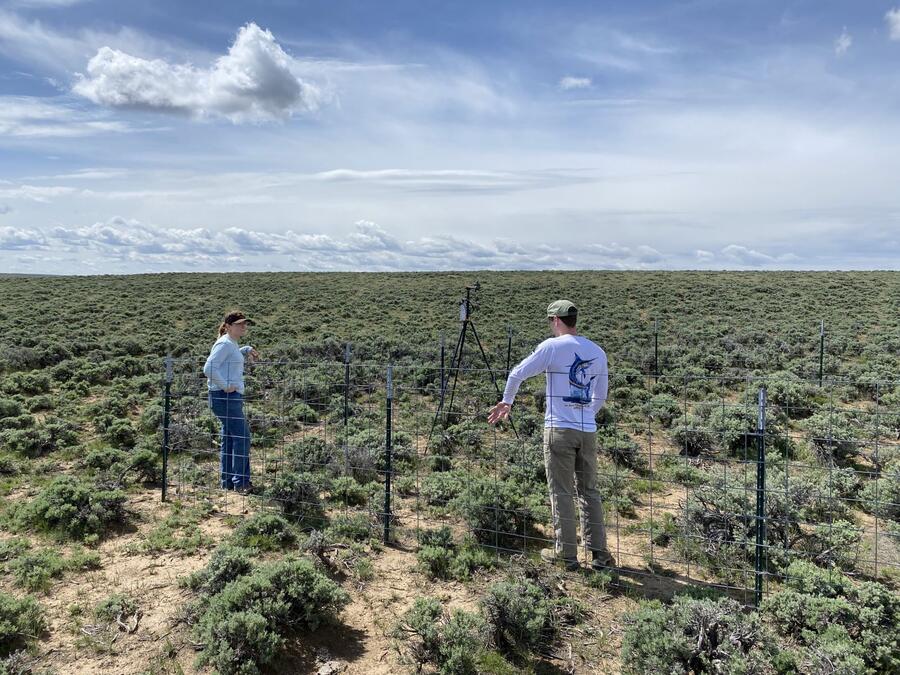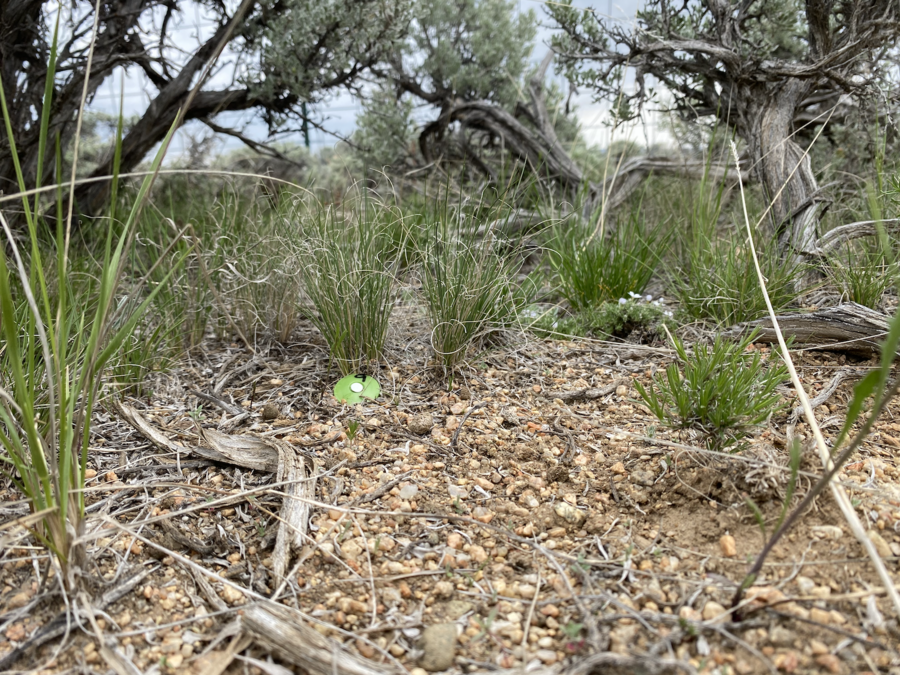Climate Change in Dryland Plant Communities

The image above shows one of the grazing removal plots in the upper Green River Basin. The fencing keeps livestock and wildlife from affecting the plant community. The device in the center of the picture is measuring NDVI, a measure of vegetative greenness, at specific points in the plot. Scott is using these points to track the differences in productivity under different grazing histories and precipitation patterns.
Scott’s research is centered on investigating the potential impacts of climate change in dryland plant communities. Given the vulnerability of dryland vegetation to alterations in water availability, he is particularly concerned with understanding how such changes in plant communities translates the effects of climate change to higher trophic levels within these ecosystems. His current research explores the interplay between shifts in precipitation seasonality and the influence of livestock grazing on the productivity and accessibility of forage resources. To achieve this, he has initiated an experimental study that involves both grazing removal and water addition. His research is based in the upper Green River Basin in southwest Wyoming, where he monitors shifts in plant community composition, phenological patterns, and overall productivity. Scott’s prior research projects have studied the impacts of landscape variability on the resilience of big sagebrush plant communities following climate-induced mortality, as well as their ability to withstand fluctuations in livestock grazing pressure.

A close up view of the understory community at one of the plots. The green nail pictured is how Scott and the team are tracking the flowering time and productivity of specific individuals in every plot.